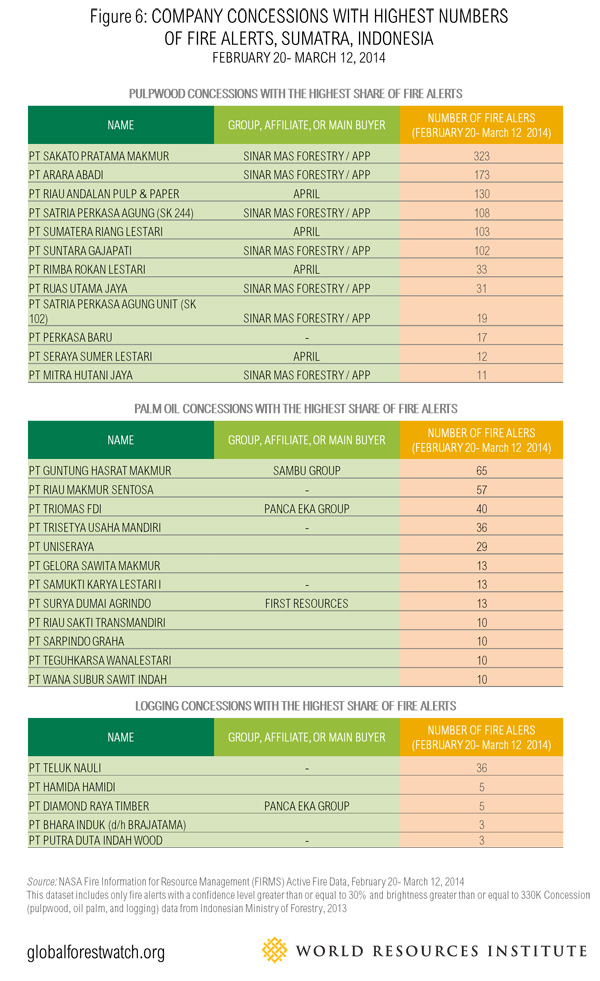
Click image for interactive map
Fires in Sumatra’s Riau province have spiked to levels unseen since last June, finds new analysis from the World Resources Institute (WRI) that reveals widespread burning within concessions managed by pulpwood, palm oil, and logging companies.
The fires, which have progressively worsened in recent weeks, are driving haze that is sending thousands of Indonesians to hospitals, delaying flights, and closing schools. And it’s not even the dry season yet, suggesting the fires could get far worse before they get better.
“These fires are burning at an unusual time—almost no fires were seen in Indonesia during the same period in 2013,” said WRI in a blog post detailing the extent of the fires.

Fire alert count for Riau Province. Courtesy of WRI
According to WRI, NASA data shows more than 3,100 fire hotspots in the past three weeks in Riau, 17 percent more than the peak during last June’s headline-grabbing haze crisis. But the current fires are getting less attention because wind patterns are keeping the air pollution over Sumatra, rather than blowing over Singapore, the regional financial hub.
Nonetheless, the impacts are significant. Indonesia’s Disaster Management Agency says that some 50,000 people are suffering from respiratory ailments, while environmentalists warn that massive amounts of greenhouse gases are being released from the fires, which are burning on carbon-dense peatlands.

Fire density in Riau. 87 percent of the fire alerts across Sumatra for March 4-11 are in Riau Province. Courtesy of WRI
WRI’s analysis shows that just under half of the hotspots have been recorded in forestry concessions and oil palm plantations, especially lands licensed to Sinar Mas Forestry / Asia Pulp & Paper (APP), Asia Pacific Resources Limited (APRIL), and various palm oil companies. But it is unclear whether these fires have been set by companies themselves, smallholders, or illegal encroachers. Several major companies who operate concessions where hotspots have been detected have explicit no burn policies. WRI says field investigations and better data on concessions from the Indonesian government would help better assign responsibility for the fires.
While the situation appears dire — and poised to worsen — WRI says there are some encouraging signs. Three companies with extensive operations in Sumatra — APP, Golden Agri-Resources, and Wilmar — have recently established zero deforestation policies that commit them to producing fiber and palm oil without burning or clearing natural forests and peatlands. At the same time, the Singaporean government is considering a new law that would enable it to fine foreign and domestic companies linked to haze that affects the country, while the Indonesian government has increased fire-fighting efforts.


Courtesy of WRI
Nonetheless WRI says the current crisis shows more needs to be done to combat the problem, which has been worsened by large-scale degradation of Riau’s forests and drainage of its peatlands. Forest cover in the province feel from 63 percent in the early 1990’s to around 20 percent today.
“But as the unprecedented number of fire alerts in Indonesia shows us, these efforts are falling far short of what’s needed to curb the crisis,” said WRI. “The fate of Indonesia’s forests, regional air quality and public health—and the people and wildlife who rely on those forests—depends on better law enforcement, more transparent information, improved coordination between government agencies, and enhanced corporate responsibility.”

Fire in Riau in early February. Photo by Rhett A. Butler